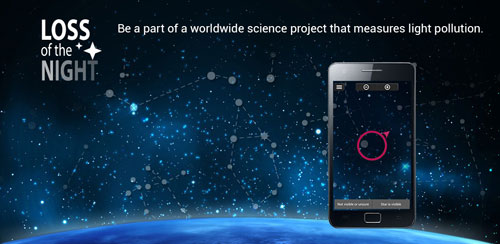| Dec 20, 2013 |
Find a star at Christmas
|
|
(Nanowerk News) If the Christmas story were set in the modern era, you might expect that the three wise men would need to rely on their GPS whenever they came into a town. But in fact, some stars can still be seen in even in the most brightly lit cities, and researchers of the German interdisciplinary project “Verlust der Nacht” are asking citizen scientists to count them. The scientists developed the “Loss of the Night app” to quantify the illumination of the night sky caused by artificial light. The app, originally available in only German and English, has now been expanded to support 11 languages in order to get data from as many regions as possible.
|
|
The aim of the app is to measure how the brightness of the sky changes over time, as lighting technologies change and cities grow. “Since the app became available in May, it has been used by thousands of people” says Dr. Christopher Kyba of the Leibniz-Institute of Freshwater Ecology and Inland Fisheries in Berlin. “Data is coming in from around the world, but most frequently from Germany and the USA. Since we want to understand worldwide trends, we wanted to make the app more accessible.” The newly added languages are Arabic, Catalan, Chinese, French, Italian, Japanese, Polish, Romanian, and Spanish.
|
 |
| IGB-Loss-of-the-Night-App
|
|
The app works by interactively directing users to individual stars, and asking whether they can see the star or not. By determining what the faintest visible star is, the researchers learn how many stars are visible at that location, and by extension how bright the sky is. No prior astronomical experience is necessary, but some users have found that without intending to they learned the names of several stars and constellations by using. The researchers communicate with the users using a blog, also called “Loss of the Night”.
|
|
The researchers noted that satellites that observe Earth at night measure the light that is radiating into the sky, not the brightness that is experienced by people and other organisms on the ground. They say that while models can use satellite data to provide estimates of how bright the sky is, the models need to be tested with data from around the world. Another drawback of the current night observing satellites, according to the researchers, is that they aren’t sensitive to certain wavelengths of light. In particular, areas lit by new white LED lights appear darker from space then they really are. |
|
The app is an extension to the “GLOBE at Night” citizen science project, which has been running since 2006. It was developed in partnership with the firm Cosalux and is based on the widely used Google Sky Map application. It is currently available only on Android phones, and has been downloaded over 12,000 times.
|
|
In the interdisciplinary research project "Loss of the Night” scientists investigate the reasons for the increasing illumination of the night, its ecological, cultural and socioeconomic effects, and the effects on human health. The results of this research will help to develop improved lighting concepts and sustainable technologies.
|
|
The app „Loss oft he Night“ can be downloaded free of charge at http://lossofthenight.blogspot.com - a blog dedicated to the app.
|

